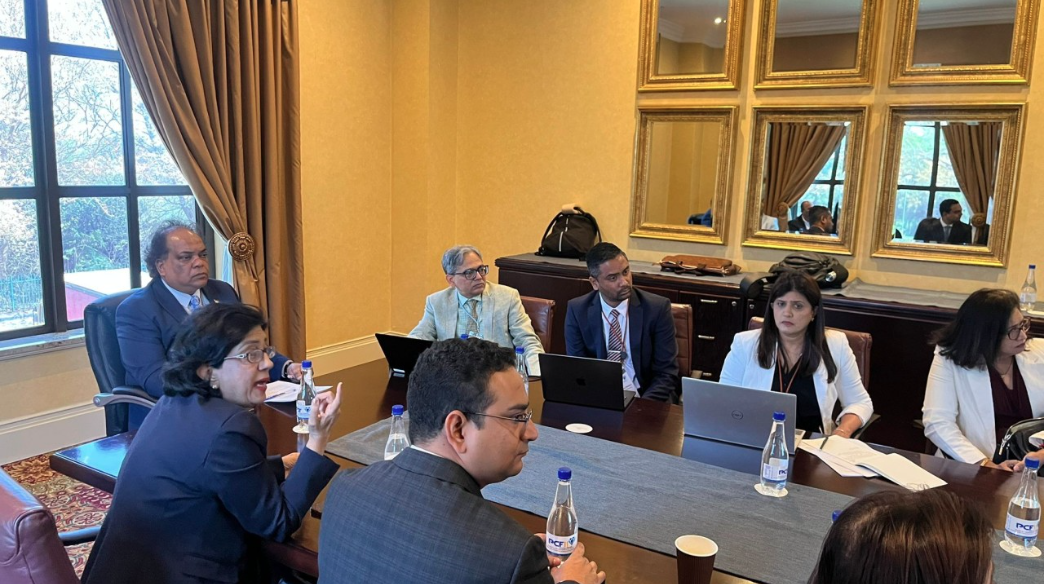
Education Specialist: Technology-Enabled Learning
The recently held 11th Pan Commonwealth Forum on Open Learning (PCF11) in Gaborone, Botswana, closed with the Gaborone Statement, which emphasizes as collective action seven with the “positive disruption in post-secondary education” through technology-enabled learning (TEL). At the Forum, the Higher Education Commission (HEC) of Mauritius demonstrated the successful implementation of COL’s model of policy-capacity-technology (PCT) across six higher education institutions (HEIs) over a period of three years.
A panel discussion during the Forum, chaired by the Honorable Dr Kaviraj Sharma Sukon, Minister of Tertiary Education, Science and Research, Republic of Mauritius, highlighted the outputs and outcomes of COL’s support. Starting with a detailed baseline study, the six HEIs developed their TEL policies through an institutional collaborative process, guided by the national TEL policy guidelines. Capacity building of teachers followed policy development in the HEIs, leading to the design and development of blended and online courses using open educational resources (OER). Teachers also received online training on how to facilitate blended and online teaching. The training was closely tied to course development, resulting in the creation of 88 quality-assured blended courses, while over 100 teachers received training. These courses are now available on the Mauritius national OER repository, which was also launched at PCF11.
COL further supported HEC in benchmarking of TEL implementation at the HEIs by applying COL’s TEL benchmarking toolkit. Experience shows that institutions with low preparedness at the baseline study level benefited most through TEL interventions. Evaluation of TEL implementation through student experience surveys and faculty focus group discussions revealed that student satisfaction was high, and teachers believed that the support received from COL enabled them to have both intra- and inter-institutional collaboration. Students’ digital literacy was a key predictor of their motivation to study blended courses. There was high institutional ownership of TEL implementation, as evident from the support received from institutional leaders and the development of three-year action plans at the six HEIs. HEC also developed policy guidelines for AI in teaching and learning to guide HEIs in the ethical use of AI.
What are the key reasons for the success of the TEL interventions in Mauritius? How can these be further replicated in other small states?
There are several reasons for the success of the project. First, the national higher education regulator in Mauritius served as the implementing agency. HEC coordinated the efforts locally and monitored the project implementation and timelines with the support of TEL coordinators at the respective HEIs. Second, COL supported the systematic implementation of the PCT model in a phased manner. The activities spanned over three years and included 11 workshops to build teachers’ capacity to develop and offer blended courses. Third, the courses used OER, and sufficient time was given to create the blended courses, which were also quality assured. Fourth, the activities promoted inter-institutional collaboration, leading to the development of a community of practice. Fifth, creation of an enabling environment at the national level by the Ministry through the adoption of the National OER policy, and support provided to the HEC in collaborating with COL for developing national policy guidelines for TEL and AI in teaching and learning.
Other small states of the Commonwealth can easily replicate the Mauritius example by collaborating with COL. COL provides relevant tools and guidance for the systematic implementation of TEL to improve the quality of post-secondary education. The success of the TEL intervention in Mauritius also showcases how leadership can play a significant role in achieving outcomes.
Follow Dr Sanjaya Mishra on LinkedIn to keep up to date with COL’s work in open and distant education across the Commonwealth.


